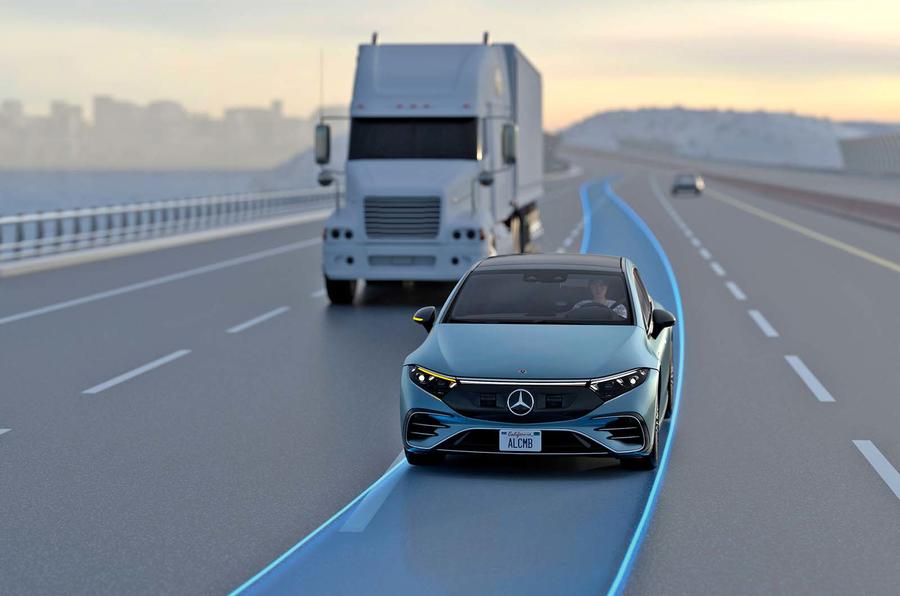Advanced driver assistance systems (ADAS) are an acquired taste, with many finding features such as lane keeping assistance (LKA) an irritation they could do without. But car makers are continuing down the road to autonomy.
Mercedes buyers in Europe can now order an automated overtaking feature on the new E-Class. It’s already available on the C-Class, E-Class and S-Class and EQ series in North America, but Mercedes says it has been adapting the function to suit European traffic conditions.
Mercedes’ Automatic Lane Change (ALC) system is part of ‘Active Distance Assist Distronic with Active Steering Assist’. If the car is going at between 47.3mph and 87mph (80-140kph) and it detects a slower vehicle ahead, it can initiate a lane change automatically if it detects lane markings and ‘structurally separated directional lanes’ (ie dual carriageways). That can be a full overtake if the lane markings are good and there’s enough clearance.
The car must be fitted with MBUX Navigation to use the feature and the road on which it’s performing the automatic lane change must have a speed limit. The driver doesn’t have to do anything else to initiate the manoeuvre, but their hands must remain on the wheel. The system can also assist with navigating road exits and merging from one highway to the next.
ALC is classified as SAE level two in autonomous driving-speak, which is the last of the levels (above level zero and one) where the driver is considered to be in control even if the car is steering and feet are off the pedals. Familiar examples are adaptive cruise control and autonomous emergency braking.
The jump to level three, which is defined as the driver not in direct control but the car driving itself in certain conditions (if not all), is a big one, so over the past few years automotive engineers have coined the phrase ‘level two-plus’, which is what Mercedes deems ALC to be.
Executing a lane change on a multi-lane road is a big step up from LKA’s mix of lane centring and cruise control that combine a degree of automated steering, braking and acceleration. But at the same time it’s not going so far as to take complete hands-free control.
It’s not a new feature to the industry, though. As well as Mercedes already having the feature in other markets, Tesla has an assisted lane change function available, while JLR developed a prototype ‘driver-assisted overtake’ manoeuvre back in 2016.
Those not completely (or even a little) sold on autonomous driving may take heart from knowing that progress towards the roads being full of robotic cars through the evolution of ADAS is even slower than first thought.





Join the debate
Add your comment
Along with the hydogen car the automonous car has become another tale of false dawns that next to no one, apart from the press, think will happen or even desire.
Yeah lol I guarantee you 70+% of Americans want this, and it's happening, just look at Cruise and Waymo